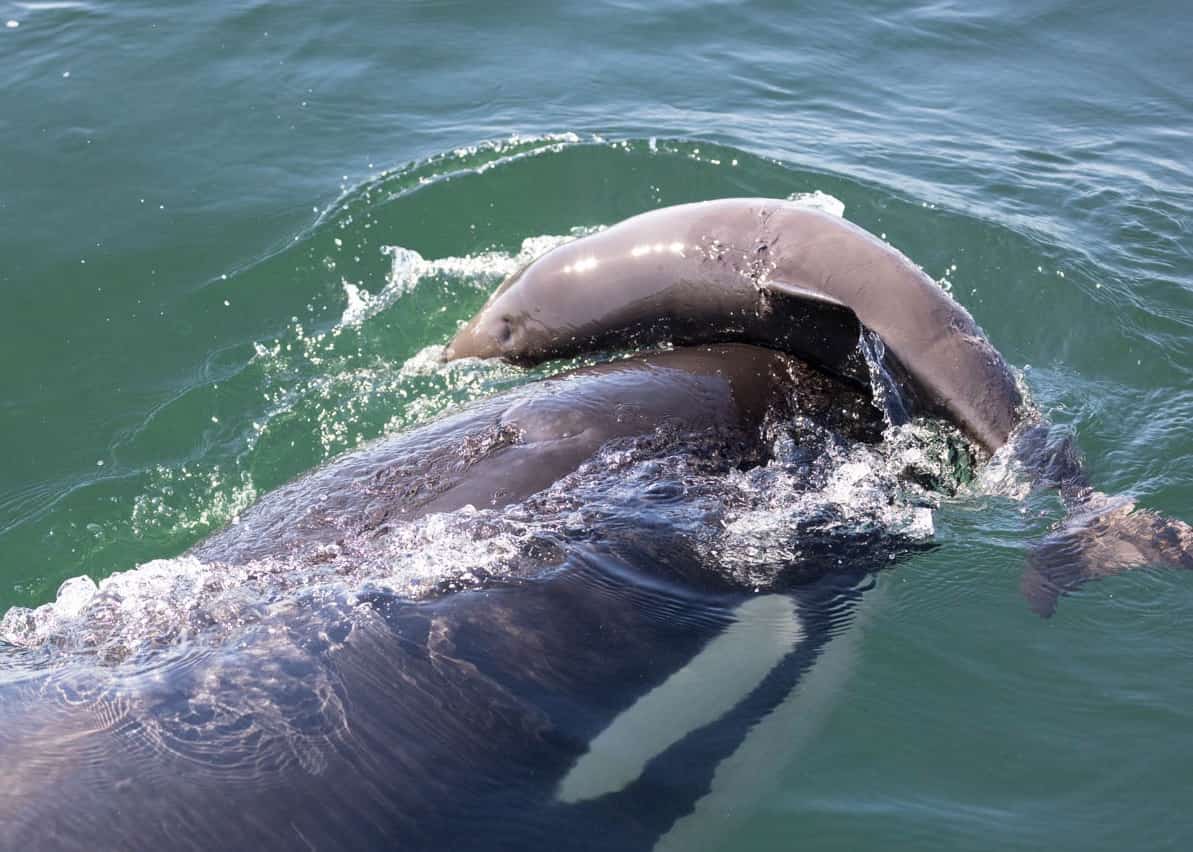For decades, orcas (Orcinus orca), also known as killer whales, have been seen harassing and even killing other marine mammals such as porpoises but not eating them. This has puzzled researchers for decades. Now, a new study might have found why, suggesting orcas may be playing, practicing to hunt, or trying to provide care.

Researchers looked at more than 60 years of recorded interactions between Southern Resident killer whales (SRKW), a small and well-studied population of killer whales, and porpoises in the Salish Sea (an inland sea shared by Washington State and British Columbia) to understand their behavior. The SRKW are an endangered population.
“I am frequently asked, why don’t the Southern Residents just eat seals or porpoises instead?” Deborah Giles, study author, said in a news release. “It’s because fish-eating killer whales have a completely different ecology and culture from orcas that eat marine mammals — even though the two populations live in the same waters.”
Three possibilities
In their study, Giles and her team identified and analyzed 78 incidences of SRKWs harassing porpoises between 1962 and 2020, of which 28 resulted in the porpoises’ deaths. They suggested three possible reasons for his behavior, the first being social play. Orcas are very smart and socially savvy, with a playful and cheerful personality.
SRKWs were seen carrying the porpoise on their backs, or “shouldering” the porpoise between multiple individuals, almost appearing as a “game” where the goal was to keep the porpoise out of the water. Sometimes SRKWs would continue engaging with the porpoise long after it had died, indicating that killing was not really the goal.
Another possibility is that porpoise harassment could be for orcas to improve their salmon-hunting skills. SRKWs could see porpoises as moving targets to practice hunting, even if they didn’t intend to eat them. Adult females, the most experienced hunters, were involved in harassment the least, while calves and juveniles were involved more.
There’s also a third alternative. Orcas could be trying to provide care for porpoises that they perceive as weaker or ill, a manifestation of their natural inclination to care for others in their group. This is called mismothering behavior. Females have been seen carrying their deceased calves and have carried porpoises in a similar way.
“Mismothering behavior, also known as displaced epimeletic behavior to scientists, might be due to their limited opportunities to care for young,” Giles said in a news release. “Our research has shown that due to malnutrition, nearly 70% of SRKWs killer whale pregnancies have resulted in miscarriages or calves that died right away after birth.”
Salmon specialists
Despite these findings, Giles and the team of researchers acknowledge that the exact reason behind porpoise harassment can never be fully understood. What’s clear is that porpoises aren’t part of the SRKWs diet. These orcas mainly eat salmon, particularly Chinook.
The study also highlights the importance of conserving salmon populations throughout the whale’s entire range. Maintaining a supply of salmon is vital for their survival and well-being. SRKWs are listed as endangered in Canada and the US and are at risk of extinction due to the scarcity of salmon, vessel disturbance, and legacy contaminants.
“Killer whales are incredibly complex and intelligent animals. We found that porpoise-harassing behavior has been passed on through generations and across social groupings. It’s an amazing example of killer whale culture,” Sarah Teman, study author said in a news release. “The culture of eating salmon is deeply ingrained in Southern Resident society.”
The study was published in the journal Marine Mammal Science.






